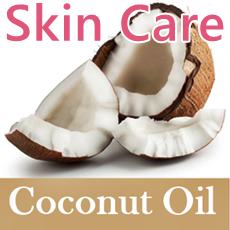Vitamins and Supplements
All you want to know about Vitamins
Fact Checked
×All the content published in our website is fact checked to validate its accuracy.
Visit our guidelines web page to learn more about our strict processes regarding how we review our content's sources: reliable and reputable journals, media websites, universities, colleges, organizations, and professionals.
Our articles are based on scientific evidence, and the references are included in its footnotes, which are clickable links to sound scientific papers.
First published: 11.Oct.2018
Overview: Vitamins, the Facts & information
Vitamins are special organic compounds that are essential for the body's metabolism. Only small amounts are required, and most of them are obtained from the food that we eat.
The lack of vitamins can cause serious medical conditions and excessive intake can also have negative health consequences.
This article discusses what vitamins are, their function in our bodies, their types, sources, a summary of each of the 13 known vitamins, and the health concerns regarding excessive intake of multivitamin and mineral supplements.
In this Article (Index)
- Vitamins: Function.
- What are Vitamins?.
- Fortified Food.
- Vitamins in Food.
- Quick Facts.
- Sources of Vitamins.
- Types of Vitamins: water and fat-soluble.
- List with Vitamins. Daily requirements and function.
- Concerns about the benefits of multivitamins.

Vitamins in a Nutshell
What are Vitamins?
A vitamin is a nutrient that the body needs in extremely small amounts to sustain life and stay healthy.
Vitamins are organic molecules meaning that they contain carbon atoms.
By "extremely small amounts" we mean quantities that range from 2.4 μg (one ten-millionth of an ounce) for vitamin B12 to 425 mg (0.15 oz) per day for choline.
Vitamin: Meaning
The name "vitamin" comes from the word "vitamine" which was coined by Casimir Funk in 1912.
Funk, a Polish biochemist was working on essential nutrients and he believed that they were a type of chemical known as "amines" so he came up with a word that combined the Latin word "Vita" = "life" and "amine."
An amine is an organic compound in which a nitrogen atom is bound to other radicals or hydrogen atoms.
The final "e" was dropped from the name after it was shown that these compounds were not amines. So they became "Vitamins" instead of "Vitamines."
Vitamins, their function
Vitamins can function as coenzymes, antioxidants, or body mineral regulators.
Enzymes are complex organic molecules that "catalyze" or speed up chemical reactions. They are present in very small amounts inside our cells.
Our body chemical reactions keep us alive, and these must take place quickly, and here is where enzymes kick in.
One molecule of an enzyme can mediate between 10 to 100 chemical reactions each second.
Vitamin-derived molecules known as coenzymes help enzymes bind to certain molecules so that they can react quickly.
Coenzymes can either be vitamins, or compounds manufactured by the body from vitamins. Vitamin B complex act as coenzymes.
Vitamins have an enormous role in our metabolism helping to keep us alive by acting as enzymes.
Other vitamins (Vitamin D) have a hormone-like function acting upon the metabolization of minerals such as calcium and phosphorus and regulating their levels in the body.
Vitamins C and E are antioxidants that scavenge free radicals so that they don't harm our cells.
If we don't ingest enough vitamins, "deficiency" diseases will appear. Illness can also appear in the case of excessive intake of vitamins.
Some diseases such as coeliac disease hamper the correct absorption of vitamins from the digestive tract leading to vitamin deficiencies.
Quick Vitamin Facts
- Vitamins are essential nutrients.
- There are 13 recognized vitamins.
- Our body can synthesize some of them, but we need to get most of them from our diet.
- Some are water-soluble, and excess vitamins are eliminated in the urine (The 8 B vitamins and vitamin C).
- Others are fat-soluble and stored in the body's fatty tissues (Vitamins A, D, E, and K). Overdosing these can be harmful.
- Supplements and multivitamins are not risk-free.
Sources of Vitamins
Most of the vitamins we need to come from food. Human beings cannot synthesize all of them (unlike dogs, that can produce their own vitamin C, we have to consume it from external sources).
We get them from dietary sources as part of vegetables, fruits, grains, and animal origin foods. This is why it is so important to eat a Balanced Diet.
Check our webpage on "Balanced Diets":
A Balanced Diet
A balanced diet consists of the right proportions of each one of the different nutrients your body needs. Learn how much of each food group you should include in your diet.
> > Balanced Diet.
Our bodies produce vitamin D when we expose our skin to sunlight (that is why vitamin D deficiency can affect people living in northern latitudes during dull overcast winters).
Read More
> > Winter Blues. How to prevent and treat winter depression.
Bacteria living in our intestines produce vitamin K and biotin which we can absorb. Vitamin A is synthesized from beta carotene, and niacin is synthesized from an amino acid (tryptophan) obtained from protein we eat.
Fortified Food
Several countries, including the US, implemented fortification programs by which vitamins (folic acid, niacin, and vitamins A, D, B1, B2, and B12) are added to certain foods to prevent eventual deficiencies in the general population.
Multivitamin and Mineral Supplements
Many people buy multivitamin supplements and take a daily dose of vitamins whether they need it or not. There are some concerns about the benefits of these multivitamins (more on this below).
Vitamins information
A history of vitamins
During the 1800s, "germ theory" became the main explanation for most ailments, and at the same time nutrition science believed that only four nutrients (carbohydrates, fats, proteins, and minerals) were essential for life.
But neither theory could explain certain diseases (scurvy, beriberi, pellagra, or rickets).
A long process of trial and error involving chemists, physicians, and other scientists finally identified certain organic compounds that were "hidden" inside the food in minute quantities that could revert and cure those diseases.
It became clear that these diseases were provoked by a deficiency of those compounds.
They were identified and isolated from foodstuffs, and their chemical structures understood. Later they were synthesized in the laboratory.
All vitamins were finally discovered between 1913 and 1948.
Types of vitamins
Classification of Vitamins
As mentioned further up, vitamins can be classified according to their solubility in water or oil (meaning that they dissolve in one or the other).
Fat-Soluble Vitamins
These dissolve in fats and oils. Adding oil to your salad will help absorb more vitamins from it, as they will solubilize into the oil. Once digested, they will dissolve in your body's fatty tissues.
This accumulation in body fat can lead to problems if the vitamin intake is excessive (especially in the case of vitamins A and D).
These vitamins are more frequent in fatty foods such as meats, dairy products, and seafood.
Vitamins A, D, E, and K are all fat-soluble.
Water-Soluble Vitamins
These are soluble in water, and as they are not absorbed by your body's tissues, any excess of them is processed in the kidneys and excreted in the urine.
All eight vitamin Bs and vitamin C are water-soluble, and only this type of vitamins function as coenzymes.
As water-soluble vitamins are not stored so easily, their intake should be consistent: a daily supply of a balanced diet helps to replenish them.
These vitamins are found in watery and starchy foods such as grains, fruits, and vegetables.
Vitamins in Food
List with Vitamins. Daily requirements and function
As mentioned before, a balanced diet is a good way to cover your vitamin needs. The following examples show why:
- One cup of cooked, boiled, and drained spinach has 943μg of Vitamin A, which covers the daily requirement of an adult man (which is 900 μg) (1).
However, some people may be undernourished or vitamin deprived; it is convenient to know your daily vitamin requirements. See the following vitamin chart that lists the uses of vitamins, their function, and the daily recommended intake.
Vitamin Chart
Below we list each vitamin and its recommended dietary allowances (RDA) or Adequate Intakes (AI) based on the Food and Nutrition Board, Institute of Medicine, National Academies (2011) (2) Dietary Reference Intakes (DRIs): Recommended Dietary Allowances and Adequate Intakes, Vitamins and the FDA (3) published guidelines. These are values for non-pregnant women, adults only.
- Vitamin A
- Vitamin B1
- Vitamin B2
- Vitamin B3
- Vitamin B5
- Vitamin B6
- Vitamin B7
- Vitamin B9
- Vitamin B12
- Vitamin C
- Vitamin D
- Vitamin E
- Vitamin K
Vitamin A - Retinols and Carotenoids
Function: Growth, development, immune function, the formation of red blood cells, skin, and bone. Vision.
Food Sources: Carrots, Cantaloupe, leafy green veggies (spinach, kale, collard greens, and broccoli), Sweet Potatoes, Pumpkin, Red Peppers (orange veggies have β-carotene), Dairy products, Fortified cereals, Eggs.
RDA: Men 900 mg ⁄ d and women 700 mg ⁄ d. - Fat Soluble
Vitamin B1 - Thiamine
Function: Food to energy, nervous system function.
Food Sources: Asparagus, Beans, Peas, Kale, green leafy vegetables, Nuts, Pork, Sunflower seeds, Enriched bread, cereal, pasta, and rice.
RDA: Men 1.2 mg ⁄ d and women 1.1 mg ⁄ d. - Water Soluble
Vitamin B2 - Riboflavin
Function: Food to energy, red blood cell formation, growth, and development.
Food Sources: Spinach, Mushrooms, Seafood (Oysters), Poultry, Meats, Milk, Eggs, Enriched bread, cereal, pasta, and rice.
RDA: Men 1.3 mg ⁄ d and women 1.1 mg ⁄ d. - Water Soluble
Vitamin B3 - Niacin
Function: Production of cholesterol, metabolization of food, digestion, and nervous system function.
Food Sources: Beans, Nuts, Seafood, Poultry, Pork, Beef, Whole Grains and Enriched bread, cereal, pasta, and rice.
RDA: Men 16 mg ⁄ d and women 14 mg ⁄ d. - Water Soluble
Vitamin B5 - Pantothenic Acid
Function: Metabolization of fat, food to energy, nervous system, red blood cell formation, production of hormones.
Food Sources: Avocados, Beans, Peas, Sweet Potatoes, Mushrooms, Whole Grains, Yogurt, Eggs, Milk, Poultry, Seafood.
AI: Men and Women 5 mg ⁄ d. - Water Soluble
Vitamin B6 - Pyridoxine
Function: Red blood cell formation, nervous system, and immune function. The metabolization of fats, carbs, and protein.
Food Sources: Chickpeas, Non-Citric fruits, Potatoes, Salmon, Tuna
RDA: Men 1.3 mg ⁄ d and women 1.5 mg ⁄ d. - Water Soluble
Vitamin B7 - Biotin
Function: Energy storage and the metabolism of fat, carbs, and protein.
Food Sources: Avocados, Cauliflower, Fruits (raspberries), Eggs, Salmon, Pork, Liver, Whole Grains.
AI: Men and Women 30 μg ⁄ d. - Water Soluble
Vitamin B9 - Folate or Folic Acid
Function: Metabolism of protein, red blood cell formation, and prevention of birth defects (critical in women who are pregnant or could become pregnant).
Food Sources: Asparagus, Avocados, green leaf veggies (spinach), Orange Juice, Enriched bread, cereal, pasta, and rice.
RDA: Men 1.3 mg ⁄ d and women 1.1 mg ⁄ d. - Water Soluble
Vitamin B12 - Cobalamins
Function: Food to energy, formation of red blood cells, nervous system function
Food Sources: Eggs, Dairy products, Meats, Poultry, Seafood (trout, salmon, tuna, haddock, shellfish clams), Fortified cereals, Fortified yeast.
RDA: Men and women 2.4 μg ⁄ d. - Water Soluble.
Vitamin C - Ascorbic Acid
Function: Immune function, the formation of collagen and connective tissue, antioxidant, wound healing
Food Sources: Citrus fruits and juices (lemon, orange, grapefruit), Kiwi, Broccoli, Brussels Sprouts, Peppers, Tomatoes (and juice), Strawberries, Berries, Cantaloupe. Cooking degrades it.
RDA: Men 90 mg ⁄ d and women 75 mg ⁄ d. - Water Soluble
Vitamin D - Calciferol
Function: Blood pressure regulation, Bone growth calcium balance, nervous system, and immune functions, hormone production
Food Sources: Eggs, Fish (mackerel, salmon, trout, tuna, herring), Fish Liver Oil, Fortified cereals, soy (non-dairy), dairy products and juices, Eggs, mushrooms. Exposure to sunlight.
AI: Men and Women 15 μg ⁄ d. - Fat Soluble
Vitamin D Fact Sheet
>> Learn more, visit our Vitamin D Fact Sheet
Vitamin E - Tocopherols, Tocotrienols
Function: Immune function, the formation of blood vessels, antioxidant
Food Sources: Green vegetables (Broccoli, spinach), Parsley, Avocado, Kiwi, Nuts, almonds, Wheat Germ, Whole Grains, Seeds, Peanuts (and Peanut Butter), Fortified Juices and Cereals, uncooked Vegetable oils.
RDA: Men and Women 15 mg ⁄ d. - Fat Soluble
Vitamin K - Quinones
Function: Blood clotting, coagulation, bone strength
Food Sources: Green Leaf veggies (broccoli, spinach, turnip greens, collards, Swiss chard, mustard greens.
AI: Men 120 μ ⁄ d and women 90 μg ⁄ d. - Fat Soluble
Effect of Heat, Light, and Air on Vitamins
As with most chemical compounds, exposure to air, light, or heating vitamins can cause some of them to decompose and lose their properties. The following list mentions the vitamins that are known to degrade under some or all of these conditions:
- Vitamin D: Heat, Air, Light
- Vitamin B1: Heat (boiling), Air
- Vitamin B2: Heat, Air
- Vitamin B3: Heat, Air, Light
- Vitamin B5: Light
- Vitamin B7: Heat
- Vitamin B12: Heat
- Vitamin E: Heat
- Vitamin K: Heat, Air
In the case of water-soluble vitamins (C, B1, B2, B3, B6, B7, B9, and B12), if the foods containing them are boiled, the water absorbs the vitamins, reducing the food's vitamin content. So it is a good idea to use this water and incorporate it into your meal.
Vitamins: Safety Concerns
Daily supplementation with multivitamins is growing all across the world. In America, one-third of adults and half of the population over the age of 55 are taking at least one supplement per day.
The Multivitamin⁄mineral (MVM) supplement industry sells $11 billion each year in the US.
The popular idea behind this trend is that vitamins are safe and may be effective as preventive agents against a wide array of diseases and conditions.
But do healthy people need these supplements? Are they beneficial? Can they reduce the risk of chronic diseases?
Below we will mention some studies that have looked into the long term health consequences and the possible harmful side-effects of vitamins:
Hamishekar et al. (2016) (4) performed a meta-analysis and reached the following conclusions:
- "Vitamin E does not prevent cancer or cardiovascular disease and may even increase risk of heart failure in patients with diabetes mellitus or vascular disease".
- "Vitamin C ... can have prooxidant effects," acting as a free radical and degrading fats by oxidizing them, this weakens cell membranes, resulting in cell damage.
- Food sourced vitamin C does not have the negative oxidative effects found in vitamin C from supplements, perhaps the antioxidant balance in foods prevents it.
- Excessive intake of Vitamin A can cause osteoporosis and increase the risk of bone fracture (such as a fracture in the hip bone).
- Comparing Folic Acid (a vitamin B) and placebo showed that "a significant excess of prostate cancers was observed in the folate group (7.3% in the folic acid group versus 2.8% in the placebo group)."
- The effect of Vitamin D combined with calcium on bone density and fracture prevention "remains equivocal and studies have shown mixed results."
This study concludes that "taking high-dose supplements of vitamins A, E, D, C, and folic acid is not always effective for prevention of disease, and it can even be harmful to the health."

Farin Kamangar and Ashkan Emadi (2012) (5) reported that MVM supplements are most likely NOT beneficial in reducing the risk of chronic diseases such as ischemic heart disease, cancer, and stroke."
They back their findings with over twenty years of large scale trials that show that "for the majority of the population, MVM supplements are not only ineffective, but they may be deleterious to health."
Multivitamins - Mineral Supplements don't improve your health
Some examples:
Fortmann et al. (2013) (6) reported several studies involving over 26,000 subjects, both men and women:
- No effect on the women group.
- Vitamin E and β-carotene did not prevent cardiovascular disease (CVD) or cancer.
- β-carotene increased lung cancer risk in smokers.
- Studies of single or paired nutrients (vitamins A, C, D, folic acid, selenium, calcium) showed no clear evidence of harm or benefit.
- Small, borderline-significant benefit from MVM after taking them for 10 years, on cancer in men only.
Huang HY et al. (2006) (7) reviewed several trials and found some benefits and many neutral effects:
- French trial combining vitamins C and E, &beta-carotene, selenium, and zinc reduced cancer risk in men, but not in women.
- Trials in France and China: no cardiovascular disease benefits.
- MVMs did not prevent cataracts.
- β-carotene and vitamin E did not have "benefits for preventing cancer, cardiovascular disease, cataract, and age-related macular degeneration."
- As with Fortmann's study, &beta-carotene MVMs increased lung cancer risk in smokers and persons exposed to asbestos.
- Folic acid alone or combined with vitamin B12 - vitamin B6 had no significant effects on cognitive function.
Rogovik, Vohra, and Goldman (2010) (8) looked into vitamins and their interactions with other medicines and their potential nasty adverse effects.
Their study covered data published from 1966 to 2009 and disclosed that:
- Vitamins have documented adverse effects and toxicities, and most have documented interactions with drugs.
- Biotin, pantothenic acid, riboflavin, thiamine, vitamin B12, and vitamin K have minor and reversible adverse effects.
- Fat-soluble vitamins (A, E, D) can cause serious adverse events.
- Water-soluble folic acid and niacin can also have significant toxicities and adverse events.
The study concluded that "vitamins A, E, D, folic acid, and niacin should be categorized as over-the-counter medications" and that "Vitamin A should be excluded from multivitamin supplements and food fortificants."
Take-home point
Don't supplement unless your doctor tells you to do so, it may cause more harm than good.
Closing Comments
A word of caution. Don't go overboard with supplements
If you eat a balanced diet (which surely includes vitamin-fortified foods) you are surely covering all of your vitamin needs.
As mentioned above there are some risks and side effects associated with unnecessary vitamin supplementation.
In some special cases, supplements may be appropriate, but you should visit your health professional to learn which supplements and in what quantities you should use. If you are pregnant or on a restricted diet you may need supplements, but don't self-medicate see your physician.
And remember that you should not exceed the maximum recommended daily dose. If you are taking other medications you should talk to your doctor before using any supplements, there may be nasty interactions.
References and Further Reading
(1) USDA National Nutrient Database for Standard Reference Legacy Release. Release April 2018
(2) Food and Nutrition Board, Institute of Medicine, National Academies (2011), Dietary Reference Intakes (DRIs): Recommended Dietary Allowances and Adequate Intakes, Vitamins.
(3) FDA Food and Drugs Administration, Vitamins, Nutrition Education
(4) Hadi Hamishehkar, Farhad Ranjdoost, Parina Asgharian, Ata Mahmoodpoor, and Sarvin Sanaie, (2016). Vitamins, Are They Safe?. Adv Pharm Bull. 2016 Dec; 6(4): 467-477. 2016 Dec 22. DOI: 10.15171/apb.2016.061
(5) Farin Kamangar and Ashkan Emadi, (2012). Vitamin and Mineral Supplements: Do We Really Need Them?. Int J Prev Med. 2012 Mar; 3(3): 221-226
(6) Fortmann SP, Burda BU, Senger CA, Lin JS, Whitlock EP. (2013). Vitamin and mineral supplements in the primary prevention of cardiovascular disease and cancer: An updated systematic evidence review for the U.S. Preventive Services Task Force. Ann Intern Med. 2013 Dec 17;159(12):824-34
(7) Huang HY et al., (2006). Multivitamin/mineral supplements and prevention of chronic disease. Evid Rep Technol Assess (Full Rep). 2006 May;(139):1-117
(8) Rogovik AL, Vohra S, Goldman RD. (2010). Safety considerations and potential interactions of vitamins: should vitamins be considered drugs?. Ann Pharmacother. 2010 Feb;44(2):311-24. DOI: 10.1345/aph.1M238. Epub 2009 Dec 29
Richard D. Semba, (2013). The Discovery of the Vitamins. International Journal for Vitamin and Nutrition Research (2012), 82, pp. 310-315
About this Article
Vitamins and Supplements, A. Whittall
©2023 Fit-and-Well.com, 05 Sept. 2023. Update scheduled for 05 Sept. 2025. https://www.fit-and-well.com/health/vitamins-supplements.html
Tags: Vitamins


